Name: Caleb Brooks; Program: Integrated University Program (IUP) Fellowship; Education Level: STEM Professional
December 8, 2023In the seven years since he earned his doctorate in nuclear engineering at Purdue University, Caleb Brooks has immersed himself in the challenges and uncertainties associated with advancing nuclear reactor technology. “I’m certainly interested in improving the computational tools to better predict what’s happening in a reactor,” said Brooks, a former Integrated University Program (IUP) Fellow, now an associate professor in the Nuclear, Plasma, and Radiological Engineering Department (NPRE) at the University of Illinois at Urbana-Champaign (UIUC).
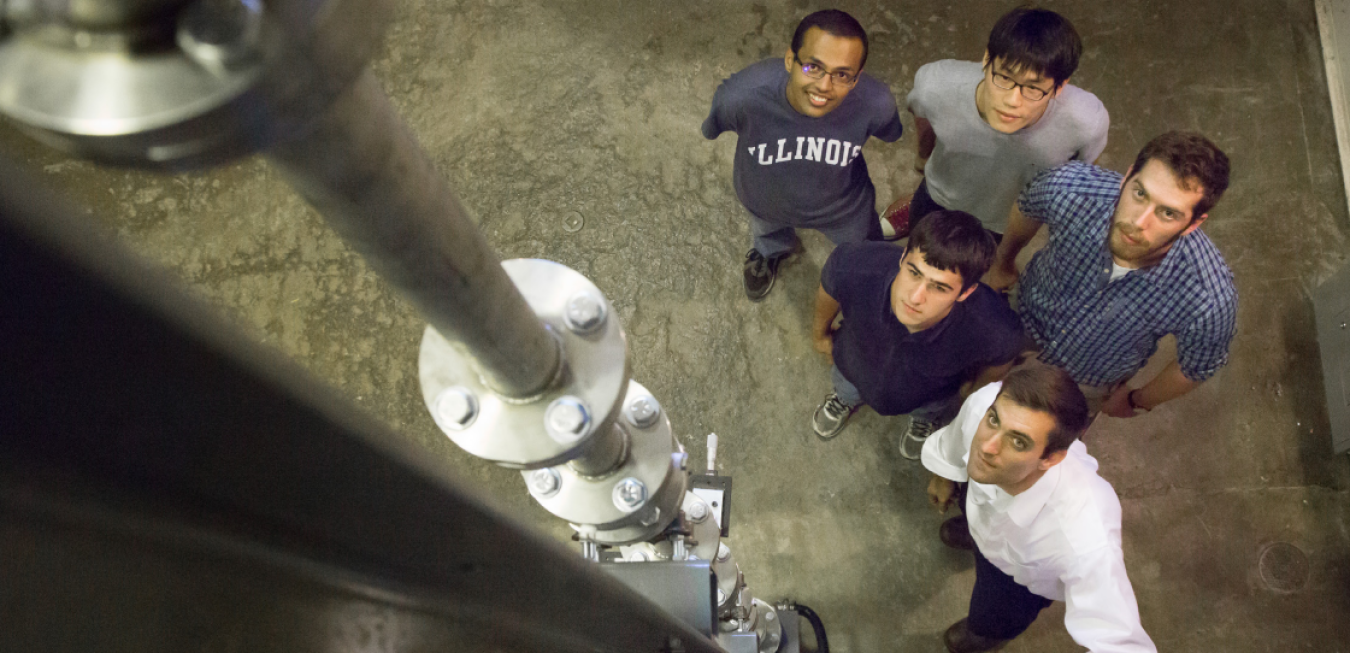
Associate Professor Caleb Brooks of the Department of Nuclear, Plasma, and Radiological Engineering at the University of Illinois at UrbanaChampaign and his research group specialize in thermo-fluid dynamics of nuclear systems and reactor flows, as well as hybrid energy approaches for existing and future power systems.
There are other things, however, of which he is strongly certain. One is that it is a good time to be a nuclear engineer —although there is not nearly enough time to push things forward as fast as they need to be moving. Second, he believes microreactors are going to revolutionize the industry, not just in remote locations but on college campuses and, eventually, at factories and data centers everywhere.
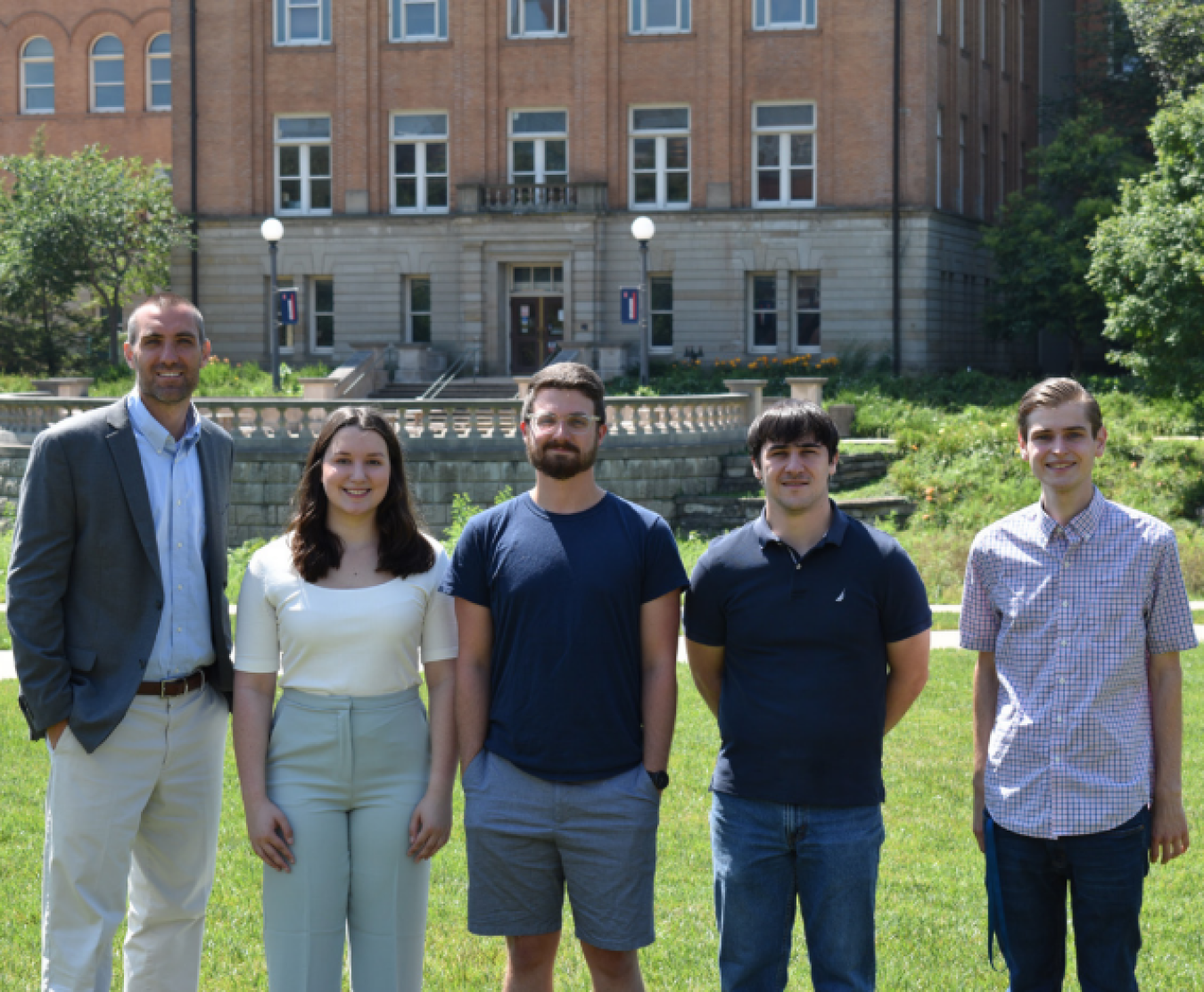
Dr. Brooks (left) joined by four of his graduate students who have also received University Nuclear Leadership Program (UNLP) graduate fellowships: (Right to left) Erik Smith, Joseph Bottini, Bruce Ciccotosto, and Michelle McCord.
A participant in the IUP in 2010, Brooks came to UIUC in 2014 with a background in thermal hydraulics and reactor safety. Today, he finds himself in the middle of a project to build a gas-cooled Tri-structural ISOtropic particle fuel (TRISO-fuel) modular microreactor and integrate it with the university’s other energy systems.
UIUC received an $800,000 Research and Development grant through the Nuclear Energy University Program (NEUP) in 2020 to improve the modeling of hybrid energy systems. The project team, led by Brooks, has leveraged the well-characterized and diverse energy portfolio of the UIUC campus to analyze the market case for microreactors in existing, energy intensive microgrids. This work aligns well with UIUC’s preparation to be an early site for microreactor technology. Since 2018, Brooks has led an effort at UIUC to deploy a microreactor as a next generation research and test reactor. Teaming with Seattle’s Ultra Safe Nuclear Corporation, they have developed a proposal for a 15-megawatt reactor at the university that will serve as a training, research, and test facility. It will be the first new university reactor in the United States in nearly 30 years, and also the first Gen IV reactor deployed at a university
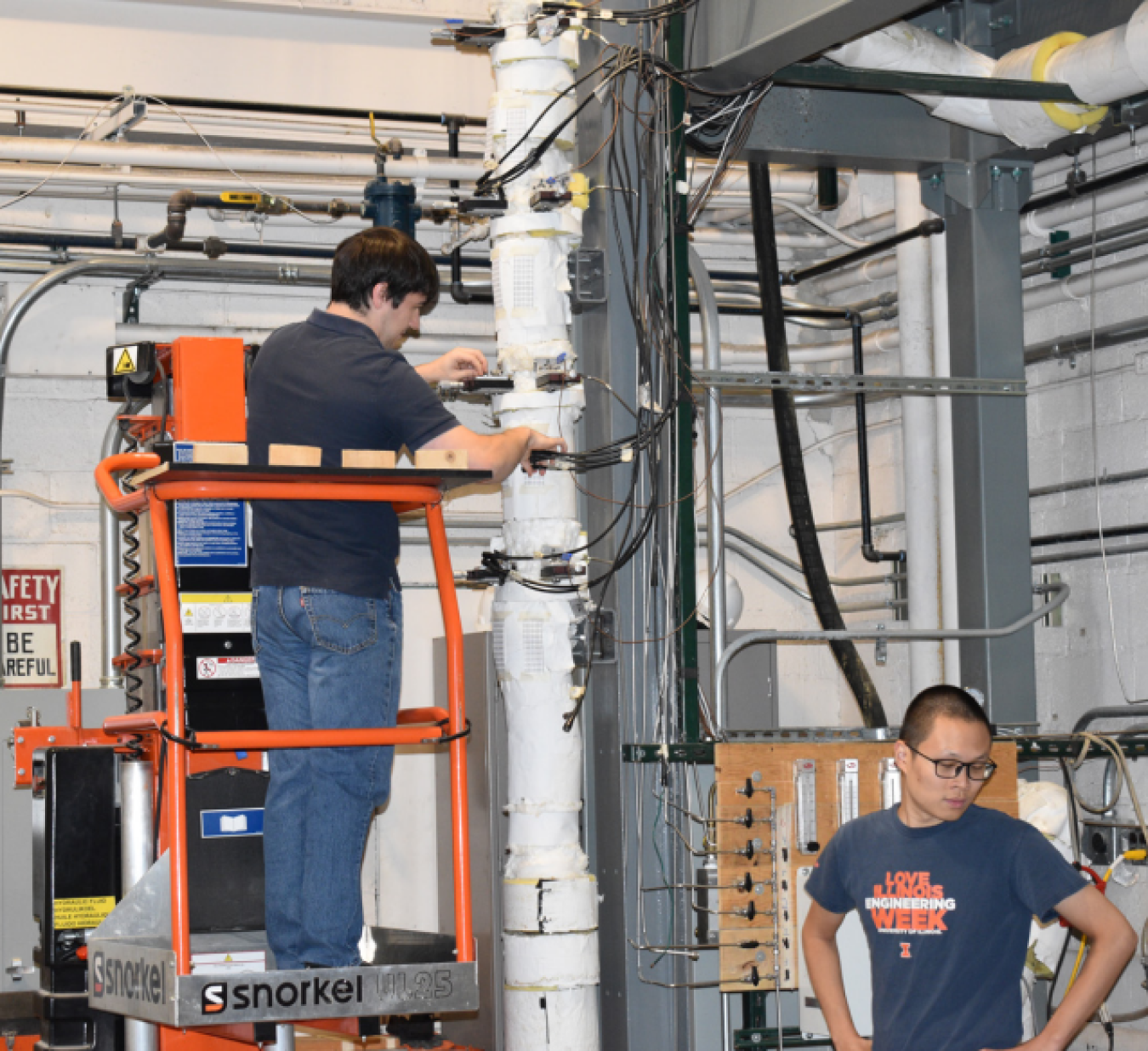
In the Multiphase Thermo-fluid Dynamics Laboratory (MTDL), Dr. Brooks and his group perform experiments to further the understanding of existing and advanced reactor technologies.
“It makes a lot of sense for early adaptation; at our campus, we’ve seen every bit of the process,” Brooks said. UIUC had a test reactor for 38 years, the Advanced Teaching Research Isotope General Atomic (TRIGA) reactor, from 1960 to 1998. That reactor was used primarily for the training of students in nuclear engineering.
“The next generation of nuclear engineers will need a next generation research reactor for the emerging advanced reactor industry to realize its full potential,” Brooks said. Having the Ultra Safe reactor designated as a test reactor, as opposed to a purely commercial deployment, offers a faster and cheaper track to approval and startup. “This is an opportunity for the public to come and see that this is not your grandparent’s nuclear power,” he said. “We can really get down to demonstrating to the public a new class of ultra-safe nuclear technology.”
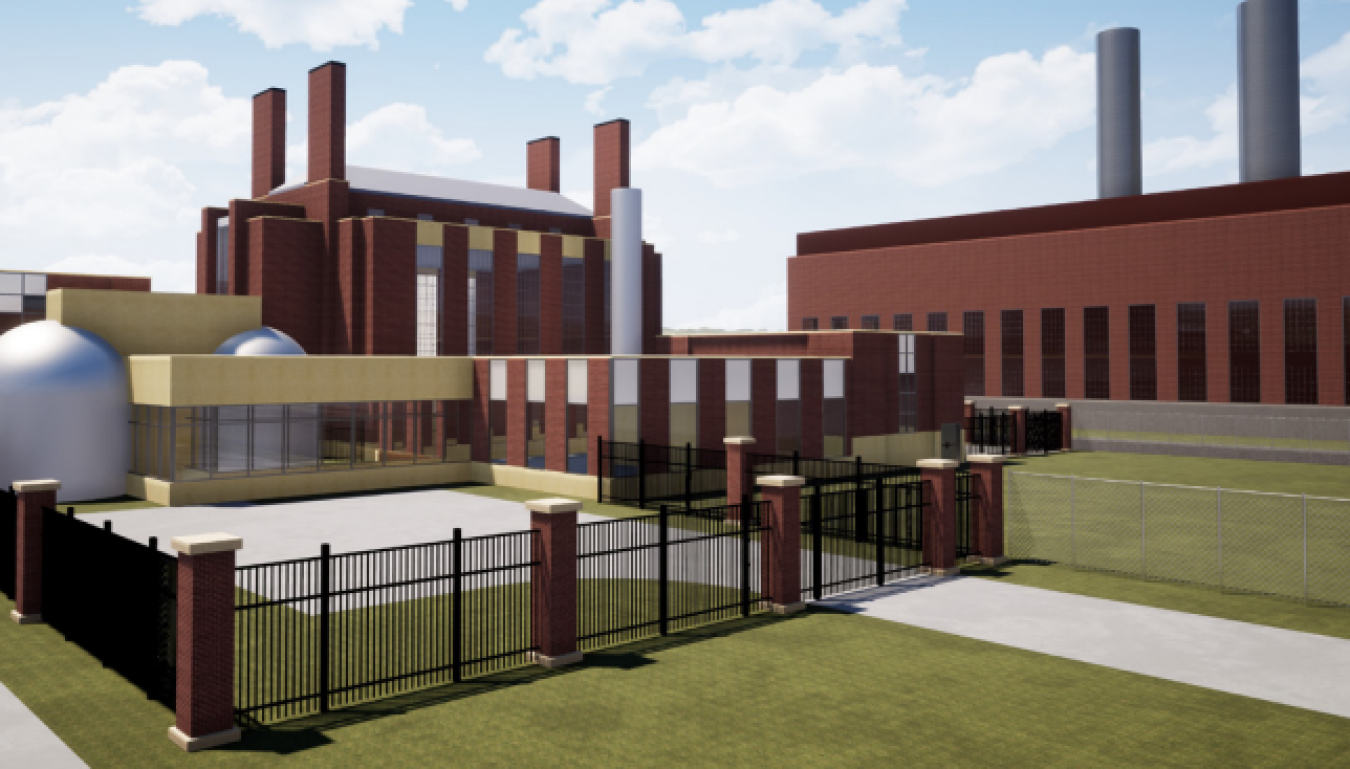
Rendering of the proposed microreactor deployment at the University of Illinois at Urbana-Champaign.
While the TRIGA reactor was an interdisciplinary facility, with other departments using it for chemistry, nuclear medicine, biophysics, and engineering research, the new microreactor’s focus will be on how it functions as a carbon-free component of an integrated energy system that also includes wind, solar, and geothermal. For baseload power, the university has relied on a coal/natural gas plant. The reactor should contribute significantly to the school, meeting its carbon reduction goals and providing a testing ground for advancements in reactor operation and control.
“For workforce development, we want to demonstrate the possibilities of a microreactor combined with renewable sources, reutilizing the existing fossil fuel infrastructure,” Brooks said. “DOE has some really big goals for advanced nuclear. It’s a great time to be a nuclear engineer, but the workforce needs to be beefed up for wide adoption.
The microreactor project is one of three NEUP projects Brooks is involved in. In 2016, he led a project aimed at generating a large database for forced convective and natural circulation reactor flows. In 2021, he became involved in a project out of Kansas State University exploring the technical and economic feasibility of microreactors integrated with chemical processes for agricultural applications—hydrogen to be used in combines and other farm equipment, and ammonia production for use as fertilizer.
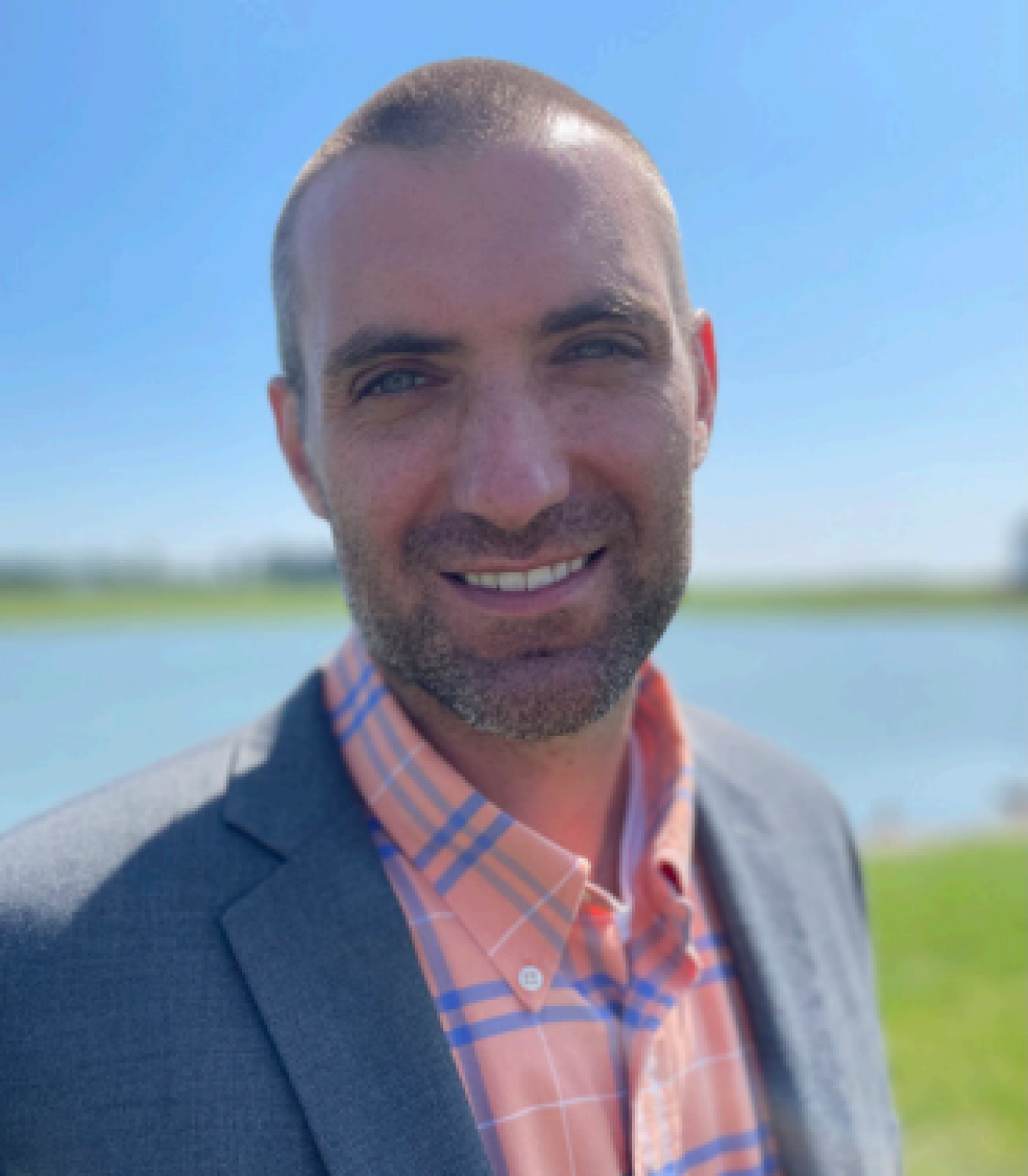
Dr. Caleb Brooks
“The technology is well positioned technically to decarbonize many energy-intensive sectors,” he said. “I’m interested in how it can be done economically.”
Brooks credits the fellowship support he received from IUP with the research opportunities he has been allowed to pursue. “It gave me the freedom to work on a lot of things. It allowed me to work on many different projects, focus on writing journal papers, and participate at national conferences,” he said. “NEUP is a major opportunity for universities, national laboratories, and industry. Universities are the wellspring for the workforce critical for the United States to continue its leadership in nuclear science and engineering."
Brooks attributes the success of the microreactor efforts and his many other projects on the people he has been able to work with throughout his time at Purdue University and University of Illinois. “The job is easier with the excellent students I have had in my research group, including four IUP fellows. To be able to work with tremendous students and collaborators, to be in NPRE at UIUC with a collaborative culture between faculty with excellent staff, makes the job enjoyable,” said Brooks. “Often the research is the easy part, so long as you can bring together the people with unified goals and a clear vision.”
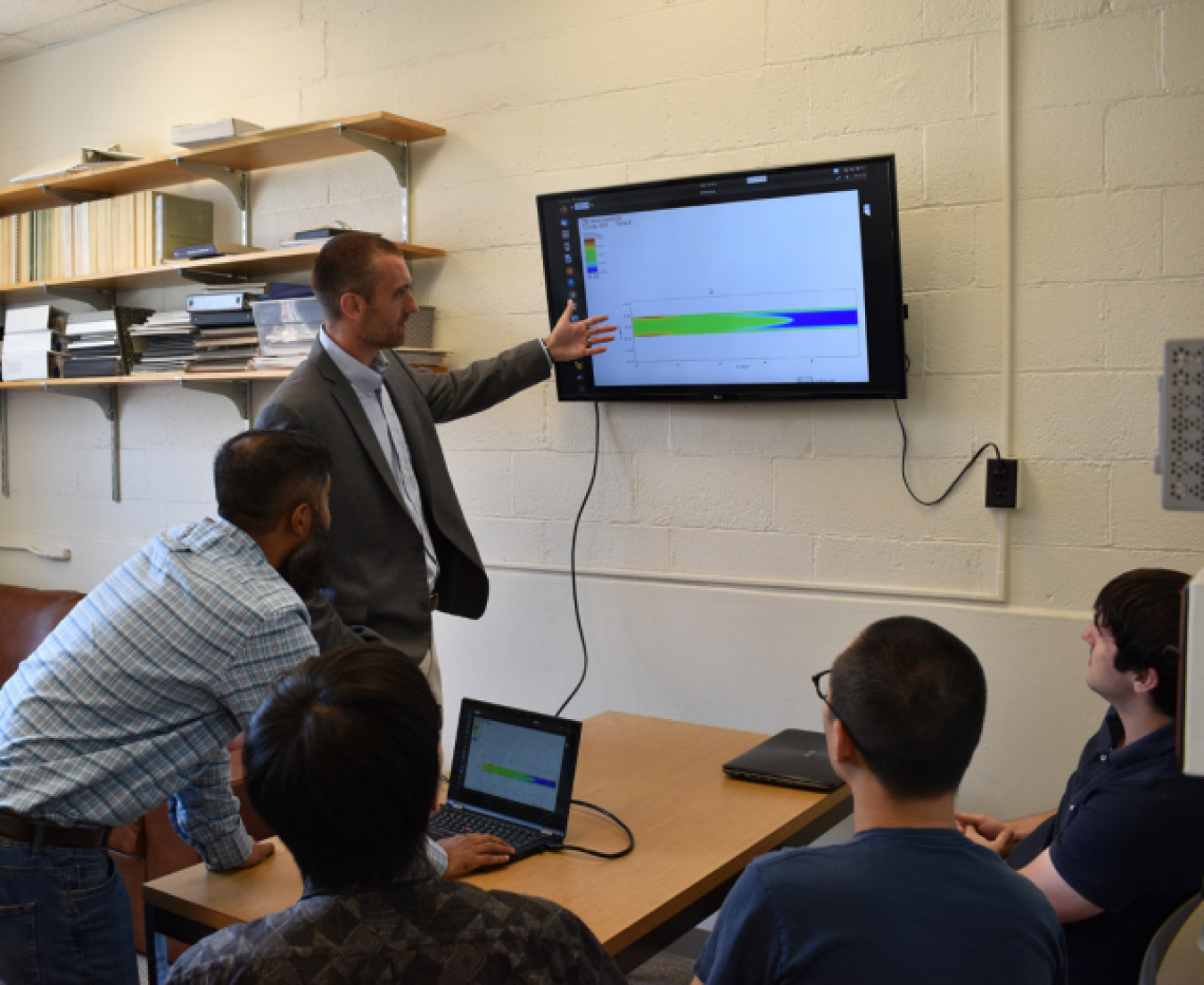
In his research group, Dr. Brooks is advancing the maturity of computational tools for advanced reactor analysis through modeling and validation.
Getting buy in on the microreactor from the campus and community has required some new approaches, for example a Reddit Ask Me Anything (AMA) session and an open campus energy forum, on top of the standard public information meetings. Nevertheless, making it clear that the project addresses clean energy and campus sustainability has done a lot to ensure a positive reception.
“We have seen tremendous support. One person summarized it best in asking, ‘Why only build one?’” he said.
Written by Paul Menser for DOE’s Nuclear Energy University Program
This profile of Dr. Caleb Brooks is one in a series of stories highlighting recipients of support from the Department of Energy, Office of Nuclear Energy (DOE-NE). In 2009 DOE-NE established the Nuclear Energy University Program (NEUP), which funds nuclear energy research and equipment upgrades at U.S. colleges and universities and provides educational support to students. In addition to NEUP, DOE-NE administers the University Nuclear Leadership Program (UNLP), formerly the Integrated University Program (IUP), which works to attract qualified nuclear science and engineering (NS&E) students to nuclear energy professions. Through UNLP and NEUP, DOE-NE has supported hundreds of undergraduate and graduate level students in obtaining science, technology, engineering, or math (STEM) degrees.
“The Office of Nuclear Energy’s scholarship and fellowship program has been attracting the top students in the U.S. into the nuclear energy field since 2009. It has been the most successful and largest program of its kind, ever. Many former students have attained leadership positions in the academic, industry, and government realms of nuclear energy. “ - NEUP Program Director, Dr. John Gilligan

